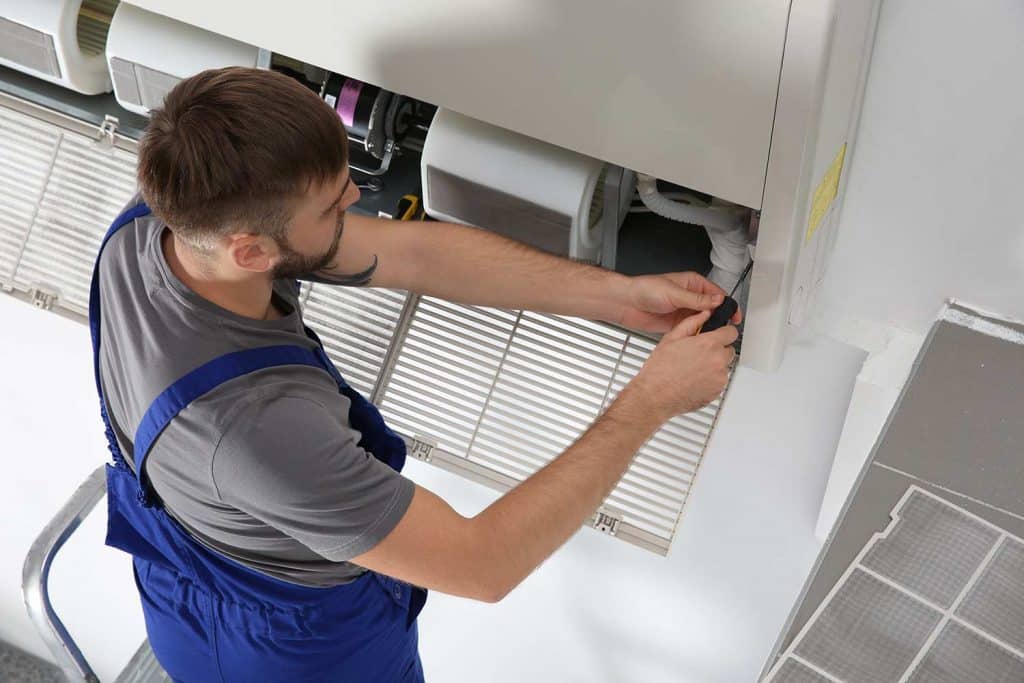
In the quest for a comfortable and healthy home environment, the significance of air conditioning and Heating, Ventilation, and Air Conditioning (HVAC) systems has never been more pronounced. At Weather Masters Of Georgia, we understand the pivotal role these systems play in enhancing the comfort, health, and well-being of homeowners. This comprehensive guide aims to unravel the intricacies of Split AC installation, offer pivotal efficiency tips, and shed light on the emerging trends revolutionizing home climate control.
What are Split AC?
Split AC and HVAC systems represent two distinct approaches to home climate control, each with its unique components and functionalities. Split AC systems are characterized by their two-part structure: an outdoor compressor and an indoor air-handling unit, connected by a conduit. This design allows for targeted cooling in specific areas, setting it apart from more traditional HVAC units.
The functionality of Split AC systems lies in their ability to provide efficient cooling precisely where it’s needed, without the complexities of ductwork.
Step-by-Step Guide to Installing a Split AC System
Installing a Split AC system involves careful planning and precision. Here’s a detailed guide to ensure optimal performance and efficiency:
Pre-installation Considerations
- Room Assessment: Evaluate the size and layout of the room where the AC unit will be installed. Consider factors like window placement, sunlight exposure, and room usage to determine the best location for the indoor unit.
- System Capacity: Choose the right size of the AC unit based on the room’s dimensions. An undersized unit won’t cool effectively, while an oversized unit can lead to unnecessary energy consumption and uneven temperature.
- Electrical Requirements: Ensure that your electrical system can handle the new AC unit. This might involve checking your home’s electrical panel for adequate capacity and planning for any necessary upgrades.
Installation Steps
Step # 1 – Mounting the Indoor Unit
- Selecting Location: Choose a spot on the wall that allows for unobstructed air flow. Avoid areas directly above electrical outlets or where furniture might block the unit.
- Securing the Unit: Use the mounting plate as a guide to drill holes and securely fix the unit in place, ensuring it’s perfectly level.
Step # 2 – Setting Up the Outdoor Compressor
- Choosing the Right Spot: The outdoor unit should be placed on a flat, stable surface, preferably in a shaded area to enhance efficiency. Ensure there’s enough clearance around the unit for proper air circulation.
- Stability: Use a concrete pad or anti-vibration pads to provide a stable base and reduce noise.
Step # 3 – Connecting Lines and Drains:
- Refrigerant Lines: Connect the refrigerant lines between the indoor and outdoor units. This step usually requires professional skills to ensure proper handling and safety.
- Power Cables: Attach the power cables according to the manufacturer’s instructions, ensuring all connections are secure.
- Condensate Drain: Install the condensate drain line, ensuring it allows for free flow of the condensation away from the unit.
Efficient Installation Bonus Tips
- Adherence to Guidelines: Follow the manufacturer’s installation instructions closely. This ensures not only the efficiency of the unit but also its longevity and safety.
- Professional Installation: For guaranteed quality and adherence to safety standards, consider professional installation services like those offered by Weather Masters Of Georgia. Their expertise ensures that every aspect of the installation is handled correctly, from electrical connections to refrigerant handling.
- Testing the System: Once installed, test the system thoroughly to ensure it operates smoothly. Check for any unusual noises, verify that all controls are working correctly, and ensure the system reaches the desired temperature efficiently.
Common Mistakes to Avoid During AC and HVAC Installation
Incorrect Sizing: Selecting the right size unit is crucial for both efficiency and comfort.
Poor Placement: Strategic unit placement significantly influences performance.
Ignoring Local Codes: Compliance with local regulations ensures safety and efficiency.
The Critical Role of Insulation in AC System
- Temperature Regulation: Proper insulation is vital for maintaining consistent indoor temperatures.
- Reducing Energy Usage: Effective insulation leads to lower energy consumption and enhanced system performance.
Cost Considerations in AC
- Determining Factors: System type, home size, and efficiency ratings are key cost influencers.
- Balancing Costs and Benefits: While initial investments might be substantial, they can be offset by long-term energy savings.
Maximizing Efficiency in Split AC
Post-Installation Tips
- Regular maintenance, including filter cleaning and leak checks, is essential.
- Implementing smart thermostats and zoning techniques can significantly boost energy efficiency.
Emerging Trends in Air Conditioning
Eco-Friendly Refrigerants
Transitioning towards sustainable and less harmful refrigerants.
Smart Home Compatibility
Integration with home automation systems for improved control and efficiency.
Energy-Efficient Innovations
Focus on reducing energy consumption and environmental impact.
Conclusion
Choosing a Split AC system requires a deep understanding of the installation process, awareness of common installation pitfalls, and staying abreast of the latest industry developments. At Weather Masters Of Georgia, we are committed to providing homeowners with the knowledge needed to make informed decisions about their climate control systems, ensuring a harmonious blend of comfort, efficiency, and satisfaction for years to come.

